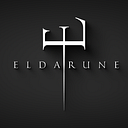Games are one of the best ways to relieve stress. Whenever we need some relax time or to chill with our friends, we jump in to the immersive world of gaming. We take it for granted nowadays but it wasn’t always like this. Gaming market increased its market volume by 370% just over the past 5 years. This shows us the great potential of the game market. But this is all about convential gaming, aka web2.0. Where players spend their money and time in return for some good time.
With the recent rise in GameFi and the dynamics of the gaming economy of Play to Earn platforms has increased its market cap to nearly $30 billion.
When compared to the Total Cryptocurrency Market Cap, which is estimated to be around $2 trillion. This means that Gamefi has a market share of only 1.5 percent.
Comparing this to the traditional gaming market, it’s merely 6.66 percent. However, most GameFi projects are not very sustainable due to various reasons. These are basically; unsustainable tokenomics, not a well studied roadmap and poor gameplay.
How Play & Earn Model Works?
The biggest and most important promise of any GameFi project is profit. That is the most appealing aspect of these projects. Let’s take a look at how this model works.
Imagine you are playing one of your favorite game, as most games, you grind items, and you have some good gears worth of hours of dedication. These items or in other terms in game assets are already exists in the game files, player just complete some the pre-requisite in order to obtain those assets but they were in the game files and will be in game files forever. Even for online games as well, you may have the item on your character but a developer can always change, remove or alter items in any way.
Comparing this to blockchain integrated games, the most important difference is that all items you acquire in-game with hours of grinding are NFTs. Which means once you obtain them, they are yours, forever.
Let’s have a broad look, all games exist for one purpose, in the end, to be commercialized. So far, in terms of Web2.0 games, transactions were single sided. User traded money for games or in-game assets. With Web3.0 games on the rise, players can pay developers for in-game assets as NFTs, but also can sell their hard earned or purchased NFT items back to the market.
In this sense, Web3.0 games are actually a win-win opportunity for both of developers and players.
Full-Scale Gameplay with Eldarune
Gaming industry has been scaling immensly, looking at how the game industry is expected to grow at an accelerated rate, and blockchain technology is now one of the fastest growing trends. It’s inevitable that Web3.0 games will be a very important part of the gaming and blockchain industry very soon.
Eldarune will take a share in the crypto market since there are still a lot of opportunities for RPG games to grow and yet there are not many RPG games with rich gameplay mechanics that players will enjoy playing. Eldarune is an extraordinary game with 4K high quality graphics and engaging lore. Players will enjoy Eldarune just like any of their favorite RPG franchises but in return, their efforts put in the game will be rewarded.
Here at Eldarune, we offer full-scale gameplay with man-to-man combat, dungeons, clan boss battles, aerial battles with dragons, or naval wars with battleships. A game where players can feel invested in so many ways. Being developed as a Web2.0 game in the first place and later integrated into blockchain technology, Eldarune will bring many benefits to players as well as developers.
4 different game modes will have 4 testnet phases. Campaign, Dungeon, Clan Boss, and PvP Arena.
Early tester will be rewarded handsomely, so don’t forget to follow Eldarune on social media for further updates and a chance to participate in the upcoming testnets.
